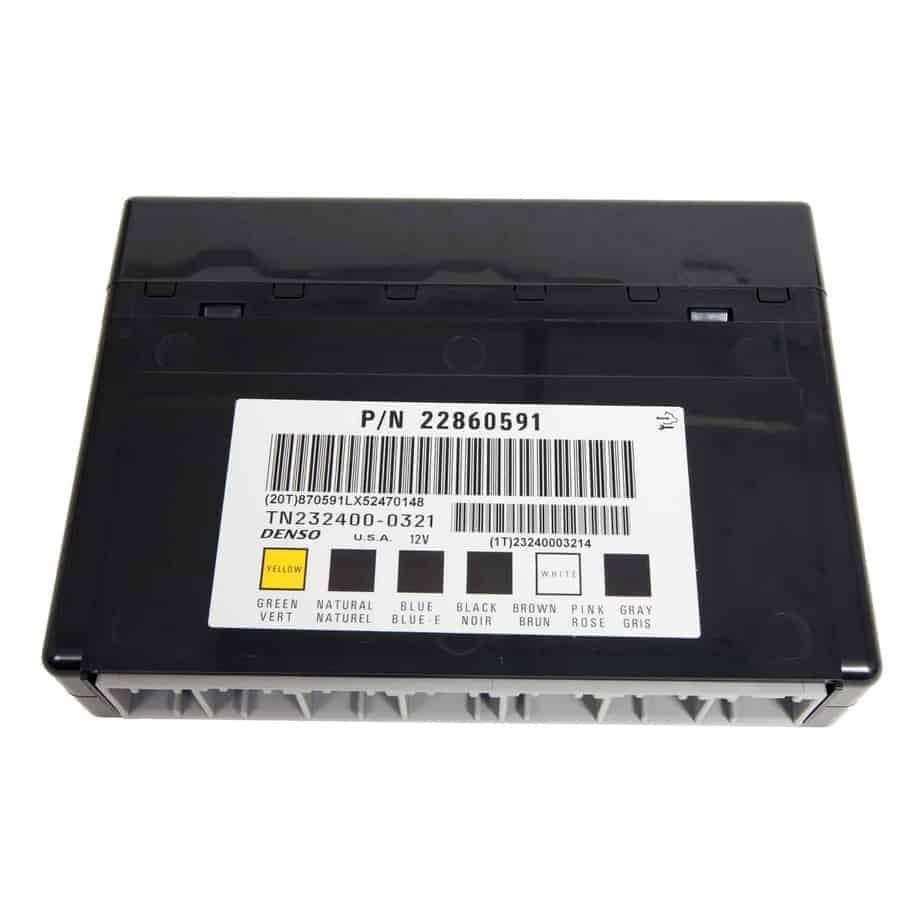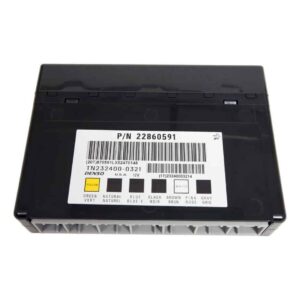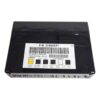Restore Your Truck’s Electrical System with a Reliable BCM
If your 2010 Chevy Avalanche 1500 is acting possessed—with flickering lights, malfunctioning power windows, or a security system that has a mind of its own—a failing Body Control Module (BCM) is the likely culprit. As the central command for your truck’s body electronics, a faulty BCM can cause a cascade of frustrating and seemingly unrelated issues. This isn’t just an annoyance; it can affect the proper function of critical systems. We offer a dependable, direct-fit solution with this BCM, complete with a cloning service that makes installation a breeze.
Forget about expensive dealership visits for programming. When you purchase this module, we perform a Cloning Service before it ships. We transfer the essential data from your original BCM to this replacement unit. This ensures that it is perfectly matched to your vehicle’s specific configuration using your VIN, preserving all original functions and avoiding compatibility errors. The result is a true plug-and-play solution for your 2010 Avalanche 1500 BCM.
A Technician’s Notebook: The Case of the Chaotic Chevy
I once had a 2010 Tahoe (which shares its platform with the Avalanche) come into my bay with a laundry list of complaints from the owner. The radio would turn off randomly, the driver’s side window wouldn’t go down, and the anti-theft light would flash, sometimes preventing the truck from starting. The owner had already replaced the battery and checked all the fuses. A scan revealed a storm of U-codes (communication errors) pointing to a network problem. Instead of chasing each individual symptom, experience told me to look at the network’s traffic director: the BCM. After confirming power and ground to the module, we swapped in a programmed BCM. Instantly, every single issue was resolved. It’s a classic example of how one single component, the 2010 Avalanche 1500 BCM, can be the root cause of widespread electrical chaos.
Is Your Avalanche Showing These Symptoms?
A failing BCM doesn’t always trigger a check engine light. Instead, look for these common indicators of failure:
- ✔ Power windows, door locks, or mirrors operating intermittently or not at all.
- ✔ Interior or exterior lights flickering, staying on, or not working correctly.
- ✔ The security system acting up, causing no-start conditions or false alarms.
- ✔ The radio or instrument cluster display behaving erratically.
- ✔ Diagnostic trouble codes (DTCs) related to communication errors (U-codes) or body systems (B-codes).
- ✔ Inconsistent operation of heating and A/C controls.
A Straightforward Guide to Installation
Replacing the BCM is a manageable job for a confident DIYer. In the 2010 Avalanche, it’s typically located under the steering column area.
- Safety First: Always disconnect the negative terminal from your vehicle’s battery and wait a few minutes for the system to discharge.
- Locate the BCM: Find the module under the driver’s side dash, near the steering column. You may need to remove a lower dash panel for access.
- Disconnect and Remove: Carefully unplug the electrical connectors. They have locking tabs that must be pressed to release. Once disconnected, unbolt or unclip the old BCM from its mounting bracket.
- Install the New Module: Mount the new, pre-programmed BCM in place of the old one. Securely plug in all the electrical connectors, ensuring they click into place.
- Reconnect and Test: Reconnect the negative battery terminal. Turn the key to the ‘On’ position and test all body functions—windows, locks, lights, radio, etc.—to confirm the repair.
Important Post-Installation Steps
Thanks to our cloning service, major programming is not required. However, depending on your vehicle’s specific systems, you may need to perform one or more of the following relearn procedures with a capable scan tool:
- Airbag System Sync: If the airbag warning light is illuminated after installation, a professional scan tool is needed to perform the ‘Setup SDM Primary Key in BCM’ procedure. This syncs the airbag system with the new BCM.
- Brake Pedal Position Relearn: To ensure correct brake light and traction control operation, a brake pedal position sensor recalibration may be required.
Will This Fit My Vehicle?
This Body Control Module is a direct replacement for part number 25910474 and is compatible with a wide range of GM vehicles. Please verify your part number or contact us with your VIN to confirm compatibility. This part is known to fit the following models (please note specific options may apply):
- Acadia: 2007-2012
- Avalanche 1500: 2010 (ID 25892622)
- Caprice: 2011-2013
- Captiva Sport: 2012
- CTS: 2008-2013
- DTS: 2006-2011
- Enclave: 2008-2012
- Equinox: 2007-2009
- Escalade, ESV, EXT: 2010 (ID 20815898 or 25892622)
- Express / Savana Van (1500/2500/3500): 2008-2012
- G8: 2008-2009
- Hummer H2: 2008-2009
- Impala: 2006-2013
- Lucerne: 2006-2011
- Monte Carlo: 2006-2007
- Outlook: 2007-2010
- SRX: 2007-2009
- STS: 2010
- Suburban 1500: 2010 (ID 20815898 or 25892622)
- Tahoe / Yukon / Yukon XL 1500: 2010 (ID 20815898 or 25892622)
- Torrent: 2007-2009
- Traverse: 2009-2012
- Vue: 2008-2010
Frequently Asked Questions
How does the cloning service work?
After your purchase, you will need to send us your original BCM. We use specialized equipment to extract the vehicle-specific data and flash it onto the replacement module. This makes the new module a perfect electronic match for your truck, eliminating the need for dealer programming.
Do I need to send you my VIN?
Yes, providing your VIN is a crucial step. We use it to load the latest GM software updates for your specific vehicle onto the module before cloning your original data. This ensures optimal performance and compatibility.
What happens to my old BCM?
Your original module is always returned to you along with the newly programmed replacement unit. We do not keep your original part.
Is this a difficult part to install myself?
For someone with basic mechanical skills, it’s very manageable. The main challenge is typically accessing the module under the dash. Since our module arrives ready to install without the need for programming, it’s a plug-and-play hardware swap. However, be aware of potential post-install relearn procedures.
What tools are needed for the post-installation procedures?
Procedures like the Airbag System Sync and Brake Pedal Position Relearn require a professional-grade bidirectional scan tool (like a Tech 2, MDI, or high-end Snap-on/Autel scanner). Basic code readers cannot perform these functions.
Disclaimer: Specific procedures and BCM locations can vary slightly by vehicle model and trim. Always consult a factory service manual or a qualified technician for guidance specific to your vehicle.



